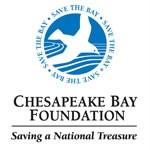Chesapeake Bay, Susquehanna River, federal environmental affairs , oysters , crabs , fish , underwater grasses , water quality , environment , climate change , education , field trips , restoration , conservation , smart growth , agriculture
SHOP ONLINE?
SEARCH THE WEB?
SUPPORT CBF
Help protect Virginia's rivers and the Bay today!
Send us your pictures
SHOP for the BAY
I'd like to meet:
People passionate about saving this national treasure and providing a legacy of clean, healthy water to future generations.
Sign up for CBF's monthly e-newsletter
Yes, I want to sign up for CBF's On the Bay E-
newsletter.
*
Name:
Name First Required
Name Last Required
*
Email:
*
ZIP / Postal Code:
Please also sign me up for the following CBF
email updates.
Environmental Education News
Heart of the Chesapeake Newsletter
Maryland Monthly eNewsletter
Pennsylvania Monthly eNewsletter
Virginia Monthly eNewsletter
Watershed-wide Monthly eNewsletter
Spam Control Text:
Please leave this field empty
Explore the Chesapeake Bay over 400 years with our interactive map.
How has your watershed been affected? What have we done to our waterways? What are we doing today? What legacy can we leave?
Time-lapse video: how oysters clean the Bay
Oysters provide much-needed filtration of Chesapeake Bay waters, habitat for other aquatic life, and a modest commercial harvest. The Chesapeake Bay Foundation estimates the native oyster population to be as low as 4 percent of historic levels. Restoring the Chesapeake's native oyster population is key to bringing back the Bay's health. Find out more at http://www.cbf.org/site/News2?abbr=SB_VA_&page=NewsArtic
le&id=31283
Clagett Farm -- Why does the Chesapeake Bay Foundation have a farm?
Welcome to Clagett Farm, a working farm, owned and operated by the Chesapeake Bay Foundation in Upper Marlboro, Maryland. We use the 285 acres of the farm for a variety of programs: vegetables, native trees, grass-fed beef, educational field programs, and agricultural policy.
For more information, visit us at cbf.org/clagett .
